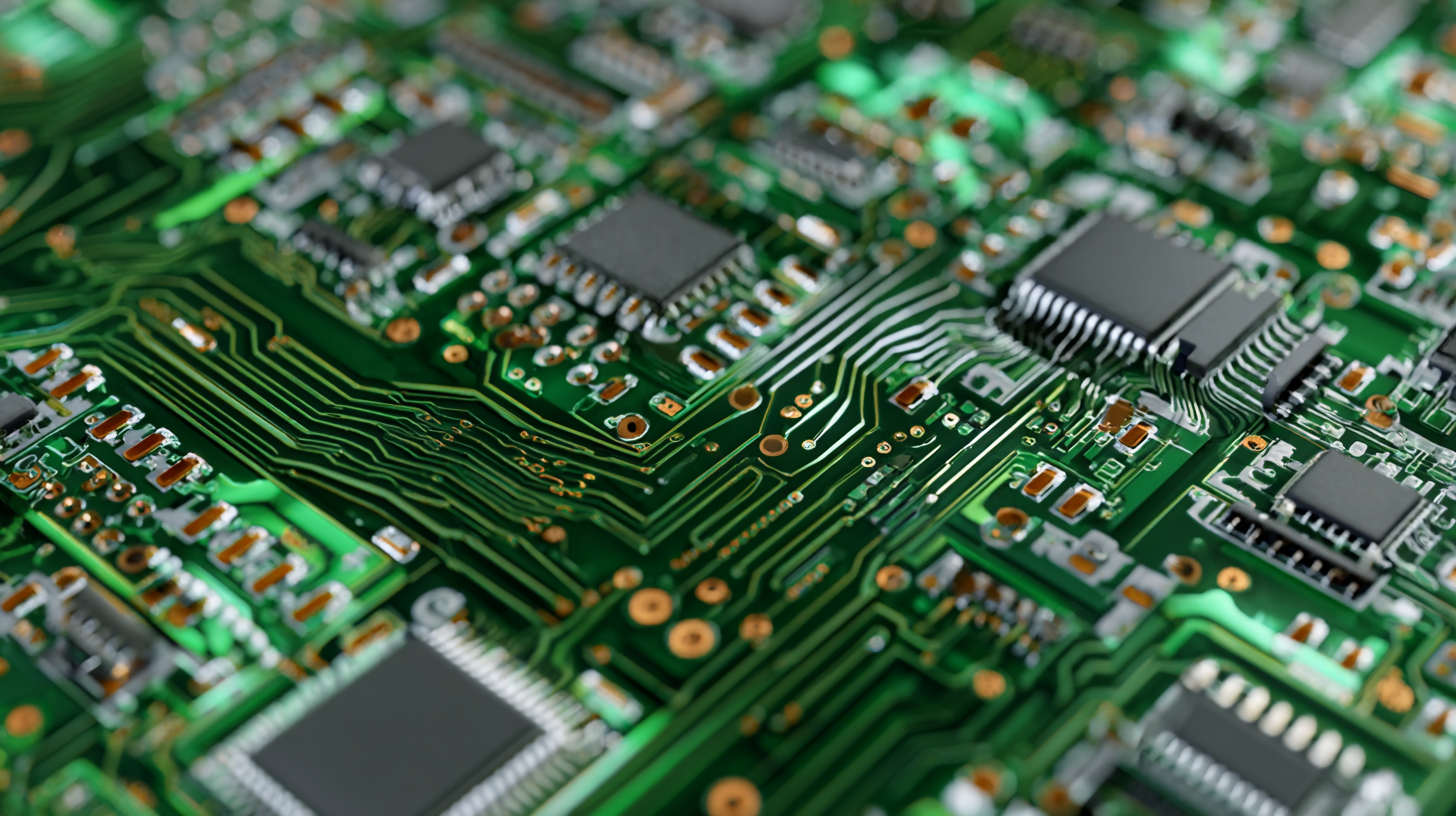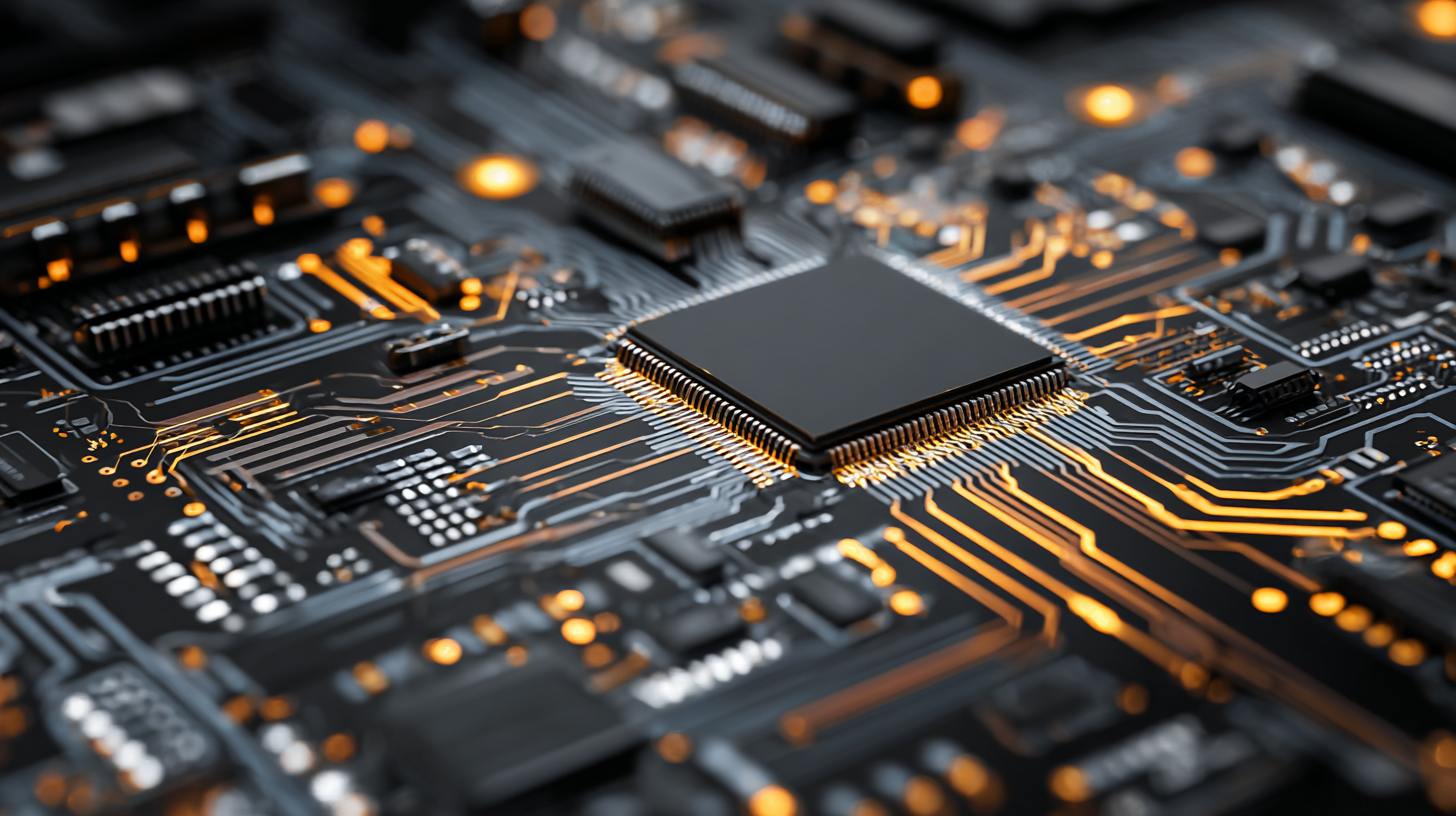Understanding the Latest Innovations in PCB Manufacturing for Modern Electronics
The rapid evolution of electronic devices has necessitated significant advancements in PCB manufacturing, making it a focal point for innovation in the electronics industry. According to a recent report by Research and Markets, the global PCB market is projected to reach $85.2 billion by 2024, driven by the increasing demand for sophisticated electronic products across various sectors, including automotive, telecommunications, and consumer electronics. In this context, new technologies such as flexible PCBs, high-density interconnect (HDI) designs, and advanced materials are reshaping how manufacturers approach PCB production. These innovations not only enhance performance but also reduce production costs and lead times, fulfilling the stringent requirements of modern electronics. As we delve deeper into the latest trends and technologies in PCB manufacturing, it becomes clear that these developments are pivotal for ensuring the competitiveness and sustainability of electronic products in an ever-evolving market landscape.

Emerging Technologies Revolutionizing PCB Design Processes
Emerging technologies are significantly transforming the PCB design processes, with innovations such as bio-microsystem integration and lab-on-PCB technology leading the way. The development of micro-total analysis systems (µTAS) since the early 1990s has set the groundwork for lab-on-a-chip solutions that effectively miniaturize complex laboratory experiments onto a single chip. This advancement not only enhances efficiency but also opens new avenues for applications in fields like healthcare and environmental monitoring, where rapid and accurate analysis is crucial.
Moreover, the integration of AI into PCB design is fostering a new era of automation and precision. Companies are leveraging AI to enhance design capabilities, streamline production processes, and reduce time-to-market for new products. Innovations in 3D printing technology are further revolutionizing the landscape, making it possible to create customized PCBs tailored to specific needs with increased speed and flexibility. As industries, including automotive and agriculture, adopt these cutting-edge techniques, the future of PCB manufacturing looks robust, promising smarter and more efficient electronic solutions.
Understanding the Latest Innovations in PCB Manufacturing for Modern Electronics - Emerging Technologies Revolutionizing PCB Design Processes
| Innovation | Description | Impact on PCB Design | Adoption Rate (%) |
|---|---|---|---|
| Flexible PCBs | Flexible printed circuit boards that allow for greater design versatility. | Enhanced design capabilities, enabling more compact devices. | 38 |
| High-Density Interconnect (HDI) | PCBs with a higher wiring density than standard PCBs. | Allows for smaller component sizes and improved performance. | 45 |
| Automated PCB Assembly | Use of robotics and machine learning for PCB assembly processes. | Increases production efficiency and reduces human error. | 55 |
| 3D Printing Technology | Utilizing 3D printing for rapid prototyping of PCBs. | Accelerates the design process and lowers prototyping costs. | 30 |
| Internet of Things (IoT) Integration | Incorporating IoT capabilities into PCB design. | Supports the development of smart devices for enhanced connectivity. | 62 |
The Role of Automation and AI in PCB Manufacturing Efficiency
The integration of automation and artificial intelligence (AI) in PCB manufacturing has dramatically transformed the landscape of modern electronics. These advancements not only streamline production processes but also enhance precision and quality control. Automated systems can swiftly adapt to different design requirements, reducing the time needed for manual interventions. Additionally, AI algorithms analyze production data in real-time, facilitating predictive maintenance and minimizing downtime, which are crucial for maintaining the competitiveness of electronic products.
**Tip:** Embrace data analytics to identify bottlenecks in your manufacturing process. By understanding where delays occur, companies can implement strategies to optimize workflows and improve overall efficiency.
Moreover, AI-driven inspection systems have revolutionized quality assurance in PCB production. They enable manufacturers to detect defects at an unprecedented rate and accuracy, ensuring that only top-quality boards reach the market. This level of scrutiny helps sustain the high standards necessary in today’s technology-driven world, where reliability is paramount.
**Tip:** Invest in training your workforce to work alongside AI systems. A well-rounded understanding of how these technologies function will enable employees to better contribute to improving and maintaining production quality.
Sustainable Practices in Modern PCB Production Methods
Sustainable practices in modern PCB production are becoming increasingly vital, particularly as the demand for eco-friendly electronics rises. Recent industry reports indicate that the global market for green PCB materials is projected to grow significantly, with potential growth rates exceeding 20% annually over the next five years. This surge in demand pushes manufacturers to adopt innovative methods that minimize resource consumption and reduce waste throughout the lifecycle of products. Eco-friendly cleaning solutions are being prioritized in the manufacturing process, enabling companies to balance device reliability with environmental accountability.

The move towards sustainable circuit boards is evident, as manufacturers are exploring alternative materials and techniques to replace traditional components like FR4, known for its unsustainable production practices. For instance, advancements in using metal inkjet printing are emerging as a game-changer in flexible PCB manufacturing, offering eco-friendly solutions without compromising performance. Additionally, strategies that target the reduction of harmful substances in PCB production are gaining traction, aligning with global standards for environmental responsibility. These initiatives indicate a broader industry shift toward sustainable PCB design and manufacturing, reflecting growing regulatory pressures and consumer preferences for greener electronics.
Enhancements in Materials for High-Performance PCBs
The evolution of printed circuit boards (PCBs) is closely tied to advancements in materials that boost performance and reliability in modern electronics. High-performance PCBs now utilize advanced materials such as high-frequency laminates, thermally conductive substrates, and flexible materials, which are essential for meeting the demands of cutting-edge applications like 5G technology, IoT devices, and electric vehicles. These materials are engineered to withstand higher temperatures and maintain signal integrity, significantly improving the overall efficiency of electronic devices.
Another significant innovation in PCB manufacturing is the integration of nanotechnology in material design. Nanocomposites enhance the electrical, thermal, and mechanical properties of PCBs, allowing for more compact designs that do not compromise on performance. Additionally, the use of eco-friendly materials is gaining momentum, aligning with the broader trend of sustainability in manufacturing. These enhancements not only lead to better-performing circuits but also contribute to reduced energy consumption and environmental impact, paving the way for smarter and greener electronic solutions.

Trends in PCB Fabrication Techniques for Advanced Electronics
The modern electronics landscape is witnessing a transformative shift in PCB (Printed Circuit Board) fabrication techniques, driven by several key trends. The rise of miniaturization has led to an explosive growth in markets such as HDI (High-Density Interconnect) PCBs, which are expected to surpass USD 19.59 billion by 2025. This shift is critical as manufacturers seek to enhance performance in smaller form factors, catering to the increasing demand for compact devices in sectors like consumer electronics and automotive applications.
Moreover, the integration of AI into PCB design and manufacturing processes represents a significant innovation, allowing for smarter and more efficient production methodologies. As companies adopt AI-driven technologies, they are likely to improve precision and reduce lead times, ultimately impacting their competitiveness in the market. Concurrently, the growth of the automotive PCB market, projected to reach USD 18.14 billion by 2034, highlights the necessity for advanced manufacturing techniques in producing reliable circuitry for modern vehicles. As these trends evolve, they are set to reshape the PCB landscape, presenting both challenges and opportunities for businesses in the field.


